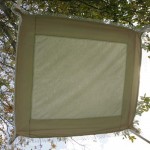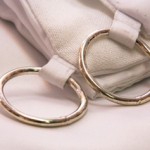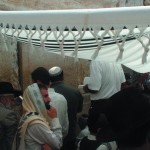Again there shall be heard in this place…in the town of Judah and the streets of Jerusalem…the sound of mirth and gladness, the voice of bridegroom and bride. (Jeremiah 33:10-11)
The wedding chuppah as we know it, i.e. a tapestry canopy, was first identified by Rabbi Moshe Issereles (“the Rema”) in the 16th century, and presumably it was relatively new in his time.
The concept, however, is ancient. Psalm 19 speaks of the bridegroom emerging from his chuppah, while Joel 2:16 says, “Let the bridegroom emerge from his chamber, and the bride from her chuppah.”
Buy Chuppah – More Info>>>

The chuppah is a legal instrument that has come to be synonymous with traditional Jewish weddings and has come to be considered an object of Jewish ceremonial art. Based on the Jewish concept of hiddur mitzvah (“embellishing the mitzvah”), considerable effort is often made to create an attractive, unique chuppah.
Under the Chuppah
The wedding ceremony takes place under the chuppah (wedding canopy), a decorated cloth held aloft which symbolizes the home the couple will build together. Acccording to the Ashkenazi custom the chuppah ceremony is held outside under the stars, as a sign of the blessing God gave to Avraham, that his descendents would be “as the stars of the heavens” (Genesis 15:5). Sefardim generally conduct the chuppah inside.
The chuppah is open on all sides, just as Avraham and Sarah had their tent open on four sides as a sign that all were welcome in unconditional hospitality.
The groom is accompanied to the chuppah by his parents, and there is a custom to wear a white robe (kittel), to indicate the fact that for the bride and groom, life is starting anew with a clean white slate, since they are uniting to become a new entity, without past sins. In fact, the bride and groom usually fast on the day of the wedding (until the chuppah) since for them it is like Yom Kippur.

Both the chasson and kallah are escorted to the chuppah by two escorts, just as Adam and Eve were escorted by angels to their wedding. The chassan is brought first, and then the kallah is brought to him, just as Eve was brought to Adam (Genesis 2:22). This showed that Eve, who was created later, was a higher life form, because the potential for future life lies within her. Adam was incomplete until Eve was brought to him.
The escorts of the chassan take him by the arm, holding candle in the other hand. The escorts of the kallah do the same. The escorts carry candles, since Jewish tradition associates light with joy. “The Jews had light, gladness, joy and honor” (Esther 8:16).
At the Chuppah: Seven Circles
When the bride arrives at the chuppah, she circles the groom seven times with her mother and the chassan’s mother, while he continues to pray. This symbolizes the idea of the woman serving as an enveloping light of the home, illuminating it with understanding and love from within and protecting it from outside harm.

Why does the kallah circle the chassan seven times under the chuppah? According to Kabbalah, this teaches us that the woman, representing the earth, reenacts the seven revolutions that the earth made during the Seven Days of Creation, reminding us that the marriage they are about to embark on is an integral part of the creative process that spans the generations. The number seven also symbolizes the wholeness that they cannot attain separately.
The bride then stands at the groom’s right. According to the Sephardic custom, at this point the groom recites the Shehechiyanu blessing over a new tallit, and keeps in mind that the blessing also applies to the marriage. The tallit is then held over the heads of the bride and groom by four young men.
Under the chuppah, an honored rabbi or relative then recites a blessing over a cup of wine, and a blessing that praises and thanks G-d for giving us laws of sanctity which preserve the sanctity of family life and the Jewish people. The bride and groom then drink from the wine. The blessings are recited over wine, since it is symbolic of life: it begins as grape juice, undergoes fermentation, making it sour, but in the end turns into a superb drink that brings joy and has a fabulous taste. The full cup of wine also symbolizes the overflowing of Divine blessing, as in the verse in Psalms, “My cup runneth over.”
Further reading on the chuppah and Jewish marriage:
Made in Heaven, by Rabbi Aryeh Kaplan
The Jew and His Home, by Rabbi Eliyahu Kitov
The Secret of Jewish Femininity, by Tehilla Abramov
Hedge of Roses, by Norman Lamm
Buy Chuppah>>
~~~~~~~~~~~~~~~~~~~~~~~~~~~~~~~~~~~
On a tight wedding budget?
Spending a few hundred dollars on a chuppah
may seem like a major expense, but consider:
– An heirloom-quality chuppah is a cherished investment
– Renting a chuppah can cost over $200
– The chuppah you choose sets the tone for your wedding
